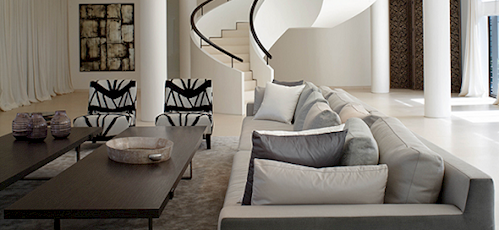Furniture
The term ‘furniture’ refers to moveable objects that are used to support human activities in the built environment. However, it can also be used more widely to refer to fitted objects and equipment.
Furniture tends to be of a craft-based design type that can be functional, decorative, symbolic, ceremonial, and so on. Many different materials are used in the manufacture of furniture, most commonly; timber, metal, plastic, fabrics, leather, and so on.
Furniture is subject to frequent changes in fashion, and tastes for furniture can vary widely from person to person.
Some of the main types of furniture include:
- Furniture for sitting: Chairs, stools, sofas, futons, etc.
- Furniture for eating or working: Tables, desks, etc.
- Furniture for sleeping: Beds, cots, bunks, etc.
- Furniture for storage: chests, wardrobes, etc.
- Garden furniture: Chairs, tables, etc.
- Street furniture: Benches, barriers, street lamps, traffic lights, bollards, etc.
Furniture can be grouped together with other components as 'FF&E' (furniture, fixture and equipment). FF&E might be procured separately to the main construction contract (or elements of them), particularly by clients that already have systems in place for procuring fixed and loose furniture, fittings and equipment; for example, schools, universities, or hospitals. For more information, see Furniture fixtures and equipment FF&E.
Interior designers are often associated with specifying furniture, analysing how a space is to be used and how best it can be planned with the most appropriate objects, considering functionality, aesthetic, space efficiency, circulation requirements, and so on. For more information, see Interior design
The Furniture and Furnishings (Fire Safety) Regulations define requirements for the fire resistance for domestic upholstered furniture, furnishings and other products containing upholstery. These Regulations are enforced by Trading Standards.
[edit] Related articles on Designing Buildings
Featured articles and news
Gregor Harvie argues that AI is state-sanctioned theft of IP.
Preserving, waterproofing and decorating buildings.
Many resources for visitors aswell as new features for members.
Using technology to empower communities
The Community data platform; capturing the DNA of a place and fostering participation, for better design.
Heat pump and wind turbine sound calculations for PDRs
MCS publish updated sound calculation standards for permitted development installations.
Homes England creates largest housing-led site in the North
Successful, 34 hectare land acquisition with the residential allocation now completed.
Scottish apprenticeship training proposals
General support although better accountability and transparency is sought.
The history of building regulations
A story of belated action in response to crisis.
Moisture, fire safety and emerging trends in living walls
How wet is your wall?
Current policy explained and newly published consultation by the UK and Welsh Governments.
British architecture 1919–39. Book review.
Conservation of listed prefabs in Moseley.
Energy industry calls for urgent reform.
Heritage staff wellbeing at work survey.
A five minute introduction.
50th Golden anniversary ECA Edmundson apprentice award
Showcasing the very best electrotechnical and engineering services for half a century.
Welsh government consults on HRBs and reg changes
Seeking feedback on a new regulatory regime and a broad range of issues.

























Comments
[edit] To make a comment about this article, or to suggest changes, click 'Add a comment' above. Separate your comments from any existing comments by inserting a horizontal line.